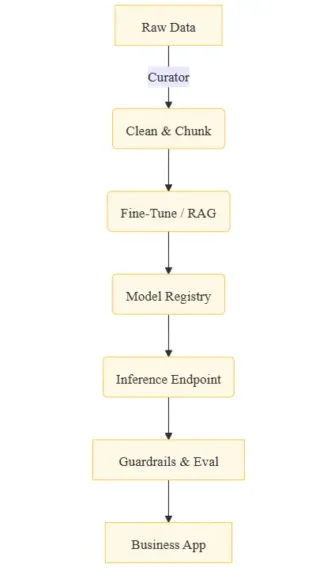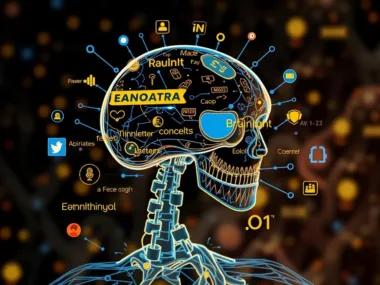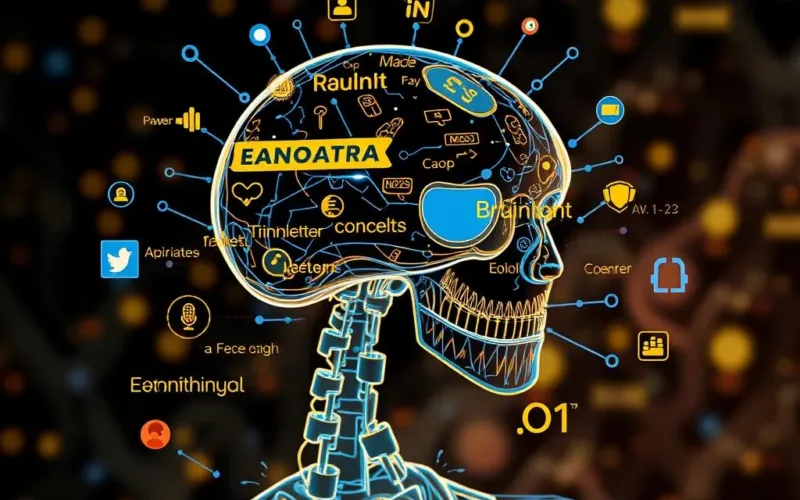Discover the transformative potential examples of generative AI in business applications for 2025. Explore its applications, benefits, challenges, and real-world examples that showcase how organizations harness this technology to enhance efficiency, foster innovation, and drive strategic decision-making.
Generative AI Business Applications Examples: A Comprehensive Analysis for 2025
Introduction
In the contemporary business landscape, generative AI has emerged as a transformative force, enabling organizations to create content, automate processes, and drive innovation with unprecedented efficiency. These technologies, which generate new data such as text, images, or code based on patterns learned from existing datasets, offer vast potential for enhancing operational capabilities across industries. As we advance into 2025, generative AI continues to evolve, providing solutions that not only streamline workflows but also foster creativity and strategic decision-making.
This article provides a detailed examination of generative AI’s applications in business, including its definition, core mechanisms, benefits, challenges, illustrative examples, and emerging trends. It aims to offer professionals a thorough understanding to facilitate informed adoption of these technologies.
Definition of Generative AI
Generative AI refers to artificial intelligence systems designed to produce new content or data that mimics human-like creativity, drawing from patterns in training datasets. These models, often based on neural networks like transformers, can generate text, images, audio, or code in response to user inputs.
Unlike traditional AI, which focuses on analysis or classification, generative AI creates original outputs, such as drafting reports or designing visuals. Its scope extends across business functions, where it automates creative tasks and augments human efforts, ensuring efficiency and scalability. In essence, generative AI acts as a digital collaborator, transforming inputs into valuable assets that support organizational goals 🧠.
Core Mechanisms
Generative AI operates through a structured process that involves data ingestion, pattern learning, and output generation. Initially, the model is trained on vast datasets to recognize underlying structures, such as language syntax or image compositions. During inference, it receives a prompt and generates new content by predicting probable sequences, often using techniques like diffusion models for images or autoregressive prediction for text.
Key mechanisms include tokenization for breaking down inputs, embedding for semantic representation, and fine-tuning for customization. This framework ensures that generative AI produces coherent, contextually relevant outputs, adaptable to specific business needs 🔄.
Business Applications of Generative AI
Generative AI finds applications across various business functions, demonstrating its versatility in addressing operational challenges:
- Content Creation: Automates the production of marketing materials, reports, and social media posts, ensuring consistency and speed.
- Customer Service: Generates personalized responses in chatbots, improving engagement and resolution times.
- Product Development: Simulates designs or prototypes, accelerating innovation in manufacturing.
- Data Analysis: Creates summaries or visualizations from complex datasets, aiding decision-making.
- HR Management: Drafts job descriptions or training materials, streamlining recruitment and development.
These applications highlight generative AI’s role in enhancing efficiency and creativity.
Generative AI Business Applications Examples
To illustrate its practical impact, consider these examples of generative AI in business:
- Marketing Content Generation 📝: A retail company uses generative AI to create personalized email campaigns, tailoring messages to customer preferences and boosting open rates by 25%.
- Code Development 💻: Software firms employ generative AI to auto-complete code snippets, reducing development time for programmers by 30%.
- Customer Support Chatbots 🗣️: Financial institutions integrate generative AI to provide instant, customized responses to client inquiries, improving satisfaction scores.
- Product Design 🎨: Automotive companies generate virtual prototypes, allowing for rapid iteration and cost savings in R&D.
- HR Onboarding Materials 📚: Organizations create tailored training videos and documents, enhancing employee engagement during onboarding.
These examples demonstrate generative AI’s ability to solve real-world business problems.
Benefits of Generative AI in Business
The integration of generative AI offers several advantages:
- Efficiency Gains ⚡: Automates content creation, reducing time spent on routine tasks.
- Cost Reduction 💰: Minimizes the need for extensive human resources in creative processes.
- Personalization 🎯: Delivers tailored experiences, improving customer satisfaction.
- Innovation 💡: Enables rapid prototyping and idea generation.
- Scalability 📈: Handles increasing workloads without proportional cost increases.
These benefits position generative AI as a strategic asset.
Challenges and Limitations
Generative AI presents certain challenges:
- Data Privacy 🔒: Handling sensitive information raises security concerns.
- Bias and Accuracy ⚠️: Models can perpetuate biases from training data.
- High Costs 💸: Initial setup and training can be expensive.
- Ethical Issues ⚖️: Potential for misuse in content generation.
- Technical Complexity 🛠️: Requires expertise for effective implementation.
These limitations necessitate careful management.
10 Enterprise Use-Cases that are Delivering Today
| Use-Case | % of Deployments* | Core Benefit | Real-World Win |
|---|---|---|---|
| 1. Customer-issue resolution | 35 % | 80 % faster tickets, 24/7 multilingual support | Klarna replaced 700 agents with an OpenAI-powered agent handling 2.3 M conversations across 23 markets |
| 2. Inquiry deflection | 34 % | Frees human reps for complex cases | KUKA’s Empolis Buddy answers parts-number questions instantly |
| 3. Code copilots | 51 %** | 55 % more time for high-value dev tasks | GitHub Copilot now at \$300 M ARR |
| 4. Marketing content at scale | 17 % | 6× faster campaign turnaround | NC Fusion cut email creation from 60 min to 10 min |
| 5. Enterprise search | 28 % | Unified semantic search across 55 data sources | Coveo provides Glean-like answers inside Slack & email |
| 6. Process optimization | 11 % | 84 % document-verification rate vs. 28 % manual | Covered California automates Medicaid eligibility checks |
| 7. IT support automation | 8 % | 24/7 password resets & troubleshooting | Condor (Brazil FMCG) built an AWS Bedrock assistant in weeks |
| 8. Product & protein design | 8 % | Weeks-to-days prototyping | Evozyne + NVIDIA BioNeMo generate millions of new protein variants |
| 9. Meeting summarization | 24 % | Auto-notes & action items | Fireflies.ai saves 2–3 hrs per employee per week |
| 10. Feasibility studies | 8 % | Fewer physical prototypes, faster go/no-go | GenMat simulates material properties at scale |
🏗️ How the Stack Actually Works

- Scale Data Engine ingests PDFs, code repos, call-center logs and auto-labels them
- RAG + Fine-Tuning hybrid keeps answers fresh without retraining every night
- Guardrails layer (constitutional AI, PII scrubbing) blocks hallucinations and toxic output
🛠️ 2025 Starter Recipes
| Business Need | 2-Hour MVP | Production Path |
|---|---|---|
| Code Copilot | GitHub Copilot → Cursor IDE → All Hands agent | Custom fine-tuned Codex on your repo |
| Support Bot | OpenAI GPT-4 → RAG on Zendesk tickets → TTS voice | Claude + Retrieval + Guardrails |
| Marketing Copy | Jasper “Brand Voice” → Human review | Fine-tune Llama-3 on your style guide |
| Enterprise Search | Glean or Elastic BBQ → 55 data connectors | Custom embeddings + reranker |
💰 ROI Cheat-Sheet
| Metric | Before GenAI | After GenAI (avg) |
|---|---|---|
| Avg. Support Ticket Time | 12 min | 2 min |
| Developer Velocity | 100 story pts/sprint | 140 story pts/sprint |
| Campaign Launch Time | 6 weeks | 5 days |
| Document Verification Rate | 28 % | 84 % |
Emerging Trends
In 2025, generative AI is evolving with trends like multimodal models and ethical frameworks. Increased collaboration between AI and humans will shape future applications. Some key emerging trends include:
- Multimodal Models: These models integrate different data types, such as text, images, and audio, enabling richer content generation and more nuanced interactions.
- Ethical AI Development: Companies are prioritizing the development of ethical guidelines to govern AI usage, ensuring fairness, transparency, and accountability in generative AI systems.
- Human-AI Collaboration: As AI becomes more integrated into business processes, emphasis is placed on enhancing human-AI collaboration to leverage human creativity along with AI efficiency.
- Regulatory Compliance: Organizations are adapting to evolving regulations surrounding AI, focusing on data privacy and security.
- Personalized AI Solutions: The trend toward personalized AI applications continues, with AI systems being tailored to meet specific user needs and preferences more effectively.
These trends indicate a dynamic landscape where generative AI will play an increasingly critical role in business innovation and strategy.
Business Applications of Generative AI Examples
Below are real-world, 2025 examples of how companies are monetising Generative AI today. Each bullet is backed by a published case study or vendor announcement.
1️⃣ Customer Service at Scale
- Klarna – AI chatbot now handles 2.3 million customer conversations/year (23 markets, 35 languages) and is doing the work of ≈700 FTE agents.
- Verizon – 40,000 reps use a Gemini-powered co-pilot; average call time cut by 1 minute, wait times down, accuracy >90 % .
- Bolt (ride-hailing) – Gen-AI bot resolves the bulk of customer complaints autonomously .
2️⃣ Coding & Developer Velocity
- GitHub Copilot – $300 M ARR; dev teams report 55 % faster task completion.
- Ubisoft – internal “Ghostwriter” LLM drafts game-scripts and C++ snippets, saving ≈30 % of narrative designers’ time.
3️⃣ Drug & Protein Discovery
- Evozyne + NVIDIA – ProT-VAE generates millions of novel protein sequences in seconds; prototyping cycle shrank from months to weeks.
- Johnson & Johnson – uses NVIDIA Clara & BioNeMo to repurpose existing drugs and predict interactions.
4️⃣ Marketing & Content at Scale
- NC Fusion – AI email generator cuts campaign creation from 60 min to 10 min.
- ASOS – Azure OpenAI styling assistant chats with shoppers, drives +18 % conversion.
5️⃣ Enterprise Search & Knowledge
- Beiersdorf (NIVEA) – Azure AI summarises R&D docs, semantic search across 55 data sources, freeing scientists for lab work .
- Coveo – RAG stack gives employees instant answers inside Slack & email.
6️⃣ Fraud & Cybersecurity
- Pets at Home – AI agent flags retail fraud transactions by analysing patterns in real-time video + POS data .
- Palo Alto Networks Cortex XSIAM – Gemini-enhanced SOC triages threats minutes instead of hours.
7️⃣ Predictive Analytics & Logistics
- Maersk prototype – LLM predicts shipping ETAs using weather, port congestion, and market signals, aiming to save billions in demurrage.
- SPAR ICS – AI demand-forecast hits 90 % inventory accuracy, cutting stock-outs by ⅓ .
8️⃣ Legal & Compliance
- LexisNexis “Lexis+ AI” – generates court-ready briefs with live citations; adoption by AmLaw 100 firms .
- Covered California – Medicaid eligibility bot achieves 84 % auto-approval vs 28 % manual.
9️⃣ Conversational Commerce & Avatars
- Lufthansa Digital Hangar – 3-D avatar guides passengers from inspiration to boarding via natural-language chat.
- Synthesia avatars – sales teams create multilingual demo videos in minutes instead of weeks.
🔟 Process & Ops Automation
- Credibly (fintech) – Gen-AI underwriters score loan risk in real time; turnaround days → minutes.
- Fireflies.ai / Otter – meeting notes and action items auto-pushed to CRM + Slack, saving 2–3 hrs/week per employee.
Quick-Glance Matrix
| Industry | Killer App | Measured Impact |
|---|---|---|
| Telco | Call-center co-pilot | 1 min saved per call × 100 M calls = massive OPEX drop |
| Pharma | Protein generator | Months → weeks R\&D cycle |
| Retail | AI stylist | +18 % conversion |
| Law | Brief writer | Hours → minutes drafting |
These examples show Generative AI has already graduated from pilots to profit centers—the question is no longer if it works, but how fast you can scale it.
Conclusion
Generative AI represents a powerful tool for business innovation, offering versatile applications and significant benefits. By understanding its mechanisms and examples, professionals can strategically integrate it into operations. As the field progresses, addressing challenges will be key to harnessing its full potential.
Generative AI has moved past pilots—it is now the quiet backend cutting costs, accelerating releases, and unlocking new product lines. The companies winning in 2025 are the ones that treat GenAI like electricity: embed it everywhere, measure relentlessly, and keep humans in the loop for the final mile.













